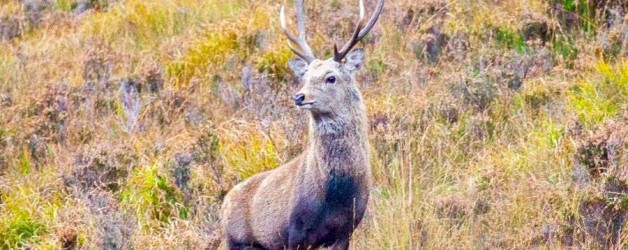Report Highlights the Importance of Data Led and Best Practice Deer Management in Ireland
A report in the peer-reviewed scientific journal, Microbial Genomics, titled “Mycobacterium bovis genomics reveals transmission of infection between cattle and deer in Ireland” was published on June 18th, 2020 by Crispell et al.. Control of bovine tuberculosis (bTB), in the Republic of Ireland costs €84 million each year and has significant financial consequences for farming families. The report evaluates if deer play a role in the spread of bTB to cattle.
Commenting on the report, a spokesperson for the Irish Deer Commission said “while deer like many other wildlife species are susceptible to TB at low levels, the report highlights that good deer management can help reduce the spread of potentially infected wild deer by carrying out informed data led culls annually to reduce wild deer numbers and maintain them at sustainable levels. Also, good deer management ensures we do not drive deer into new areas by over-culling or sustained increased hunting pressure.”
It is understood deer can act as a spill over host for the infection where high deer densities are present, however there is no clear evidence to show deer are a source of infection for cattle.
The Microbial Genomics paper by Crispell et al. suggests that the range and density of wild deer populations in Ireland is increasing. This statement is based on two published papers,
- A study on the 2008 national distributions and ranges of wild deer species present on the island of Ireland published in 2011 in the scientific peer-reviewed journal, Mammal Review, by Carden et al. . While new results based on 2019 wild deer data is currently being analysed by the Irish Deer Commission, the 2008 data is very much out of date and should not be used.
- A different study published in the peer-reviewed Scandinavian Journal of Forest Research, by Liu et al. in 2018, titled “What factors affect national-scale deer population dynamics in the Republic of Ireland?”, where the authors modelled deer population numbers based on the assumed the harvest rate data (NPWS cull returns from deer hunters) for each deer species reflected the changing deer populations for that species. They further assumed that the cull returns from deer hunters occur at an equal rate across all counties that is constant over time; in reality, this is not the case.
The NPWS cull returns has limitations, inherent issues and cannot be independently verified. In the absence of a deer census it is unknown if deer numbers are increasing or decreasing in Ireland.
In Ireland bTB is caused by the bacterium, Mycobacterium bovis. The findings of a study undertaken by the Department of Agriculture, Food and the Marine (DAFM) into the presence of bTB in wild deer and cattle in Co Wicklow, a hot spot for bTB, were published in 2018 and showed the presence of five strains of Mycobacterium bovis in the study area, which . Crispell et al.’s study also highlights cattle and deer share some of these strains of Mycobacterium bovis. James O’Keeffe, SVI, Head, DAFMs Wildlife Unit said regarding the DAFM study “this information does not inform us about the direction of spread of disease, and cannot be used to draw any conclusion about which species may be infecting which other species.”
Other studies undertaken by DAFM in cattle bTB hotspots in Co Sligo and Co Kerry show no presence of bTB in deer tested. These findings suggest there is no correlation between the presence of bTB in cattle and the presence of deer. Similar findings can be taken from Scotland, despite an estimated deer population of over 800,000 wild deer, the country has been officially bTB free since September 2009.
A recommendation to the Minister of Agriculture and the Minister of Arts, Heritage and Gaeltacht in 2015 by the Irish Deer Management Forum, Data Sub-committee (representatives of stakeholder interests nominated by their respective groupings and approved by the Minister for Agriculture, Food & the Marine and the Minister for Arts, Heritage, the Gaeltacht & Rural Affairs) confirmed “that there is no evidence to link Bovine TB incidence in deer in Ireland or the UK to Bovine TB outbreaks or persistence in cattle herds.”
In 2018, Dr Eoin Ryan, Chief Veterinary Inspector at the DAFM said there is “no evidence of link between wild deer and the spread of TB.” No study to date has showed the directionality of bTB transmission from wild deer to cattle (or badger) or vice-a-versa. Further research is required to elucidate transmission directionality within a potential multi-host system and certainly the integration of genomics into routine bTB surveillance, as Crispell et al. suggest, is a welcomed next step in further studies.
The many statements by academic and other experts in this area along with factual data available certainly call into question claims deer are a source of infection to cattle. While the Microbial Genomics journal report contains several short comings, the discussion the report creates is to be welcomed. It is clear more research and ongoing surveillance is required in conjunction with best practice data led deer management.
To read the Crispell et al report published in the Microbial Genomics journal click here
Photograph of Wicklow Sika Stag by Siobhan English
Ends
For further information email info@irishdeercommission.ie
Irish Deer Commission membership to apply to join or renew (€20 for ordinary membership) CLICK HERE

